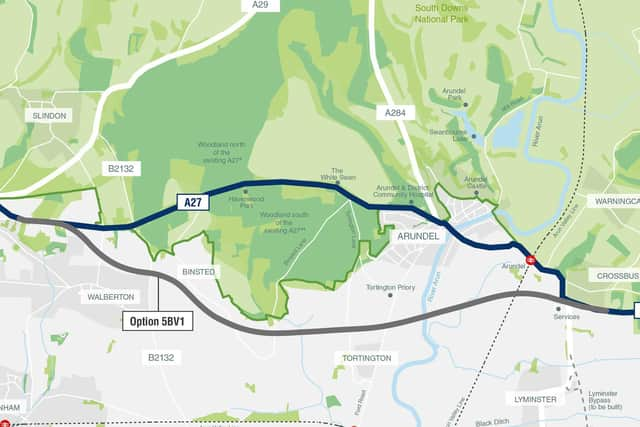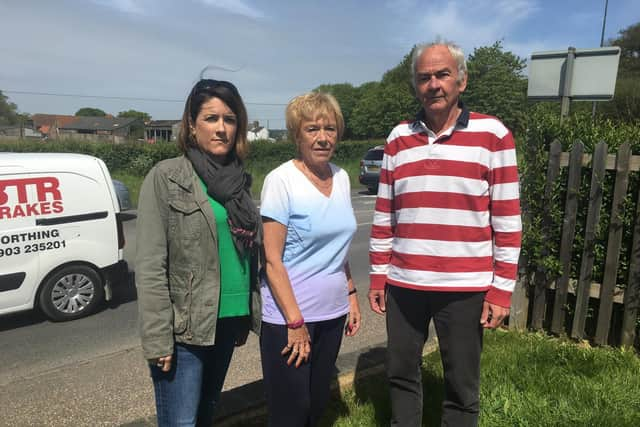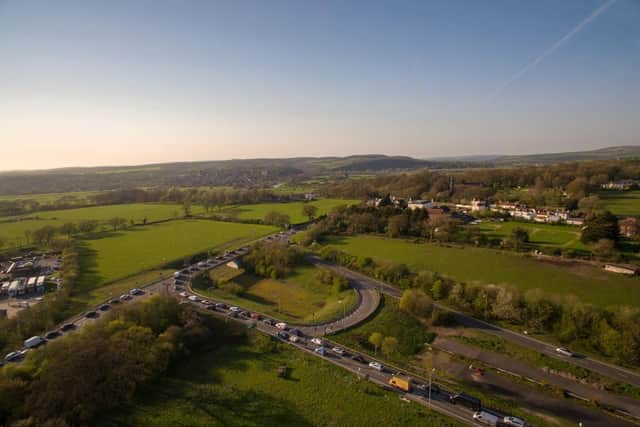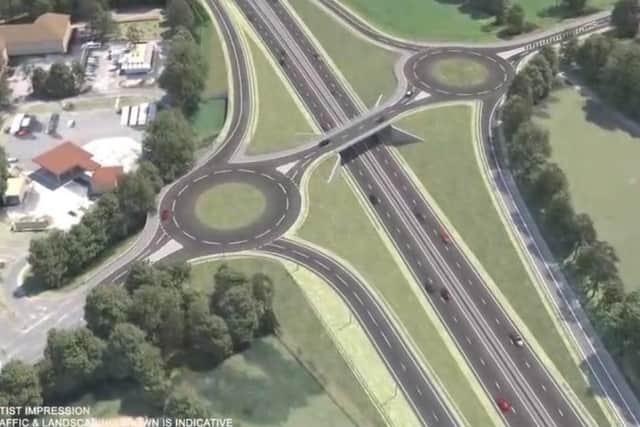Arundel Bypass: everything you need to know about the new route
and live on Freeview channel 276
Last year, it put forward six colour-labelled options for the A27 bypass that the public could have their say on. Thousands responded to the consultation, and today (October 15) Highways announced that the 'grey route' has been picked as the one it will be hoping to build.
What is the 'grey option'?
This route, shown in the video above, sweeps south of the South Downs National Park and includes a new dual carriageway between Crossbush in the east and a new junction near Tye Lane in the west.
Advertisement
Hide AdAdvertisement
Hide AdIt is the longest and costliest of the six routes put forward, estimated by Highways last year at £320 to £455million, cuts through the least amount of woodland - 1.49 hectares, compared to 20.57 for the most impactful option - and is the only option not to pass through at least part of the national park.
It would also save the most driving time: six to 11 minutes per journey, Highways previously estimated. It is expected to deliver benefits for 60 years.
But it will heavily impact the villages of Binsted, Walberton and Tortington, which have fought against bypass plans for years. The new road would cut through Binsted Valley, passing close to the village’s 12th Century church, natural wetlands and a rare chalk stream, campaigners said.
Environmental campaigners have also been extremely vocal in opposing any bypass.
Advertisement
Hide AdAdvertisement
Hide Ad

Both Arun District Council and West Sussex County Council originally backed the 'magenta route' option, which was similar to the grey route but went through ancient woodland and the South Downs National Park and went through more of Binsted than Walberton.
What benefits does Highways England claim a 'grey' bypass will bring for drivers?
Aside from the reduced journey times, Highways England said it will:
Make journeys safer - the A27 at Arundel has an above average collision rate. In the five-year period January 1, 2013 to December 31, 2017, 81 personal injury collisions, resulting in 121 casualties, were recorded between Crossbush junction to the east and the Fontwell (East) junction to the west.
Advertisement
Hide AdAdvertisement
Hide Ad

Reduce congestion – the existing A27 through Arundel is operating at up to 150% capacity, with around 21,000 vehicles using the A27 through on a daily basis, this is predicted to increase to 26,300 by 2041.
Support economic growth – businesses across the region will benefit from efficiencies and improved journey times, while the additional capacity will enable the authorities to better manage population growth.
How has West Sussex reacted?
For residents of Binsted, Walberton and Tortington, this is the worst-case scenario.


On Twitter, Binstead Village said: "Horrific for Binsted, Walberton and Tortington. ‘Avoids the National Park’ but will wipe out our village completely. Binsted Rife Valley, trashed. St Mary’s Church, almost 1000 years old, utterly ruined. We are desperate."
Advertisement
Hide AdAdvertisement
Hide AdIt added: "Grey route is so bad we thought they’d never go for it."
Extinction Rebellion Chichester replied: "Madness, cruel devastating madness. Time to lie down in front of so called progress."
Suzanne Clark, chairman of Walberton Parish Council, said it was the 'worst possible option' for the villages.
Emma Tristram from Binsted, who previously blocked bypass plans with a High Court challenge, felt Highways England had ‘ignored public opinion’ as ‘only seven per cent of responders voted for [grey] in the public consultation’. “A majority of the responders – 64% – wanted Beige or Cyan [routes that followed the current path of the A27] or ‘do nothing’”, she said.
Advertisement
Hide AdAdvertisement
Hide AdIn contrast, The Woodland Trust said it was 'delighted threatened ancient woodland has had a reprieve' and Arundel mayor Tony Hunt, speaking on behalf of Arundel Town Council, welcomed the news as it would stop drivers ‘rat-running’ through the town centre.


Environmental campaigners are also not happy. The countryside charity CPRE Sussex said it was 'appalled' by the news and the Arundel SCATE community group said it wanted all bypass plans to be scrapped.
Politicans have also spoken out following the news. Andrew Griffith, Conservative MP for Arundel & South Downs, supported the project but was disappointed alternative routes that had less impact on the villages had been 'blocked'. He said he was 'committed to supporting residents in getting the best noise mitigation, road design and, where appropriate, swift compensation'.
Paul Marshall, Conservative leader of West Sussex County Council, said he would also be lobbying Government for support for the residents affected and the council would now examine the reason for this decision.
Advertisement
Hide AdAdvertisement
Hide AdDr James Walsh, Lib Dem leader of Arun District Council, backed the plans, saying it was 'a crucial part of the A27 major national and regional south coast route, of crucial importance to business, tourists, and residents'.
This was echoed by the Transport for the South East partnership of business leaders and local Government figures, which welcomed the news as it would aid the South East's economic growth.
How has Highways England responded to concerns?
Jason Hones is programme leader for the Arundel Bypass. Since the public had its say on the six options last year, which has informed Highways' decision, the pandemic struck - leading to a massive fall in the amount of cars on the roads and an increase in working from home which could have a long-term impact.
In response, Mr Hones said: "Coronavirus hasn't really impacted on our decision-making as it will be a relatively short-term blip when we are designing a road with benefits for 60 years.